
Tech & Sci
16:37, 28-Dec-2017
China in 2017: Heights and depths of China’s 2017 sci-tech feats
By Gao Yun

“We should aim for the frontiers of science and technology, strengthen basic research, and make major breakthroughs in pioneering basic research and groundbreaking and original innovations.” – Xi Jinping
2017 was a momentous year for China in the field of science and technology. From outer space to deep sea, China broke physical barriers, smashed scientific boundaries and pushed the limits of innovation. It shattered records and set new ones, introduced the world to a handful of firsts and blazed many new trails in numerous fields.
CGTN is going back in time to review some of the major scientific and technological breakthroughs China has achieved in 2017.

CGTN Photo
CGTN Photo
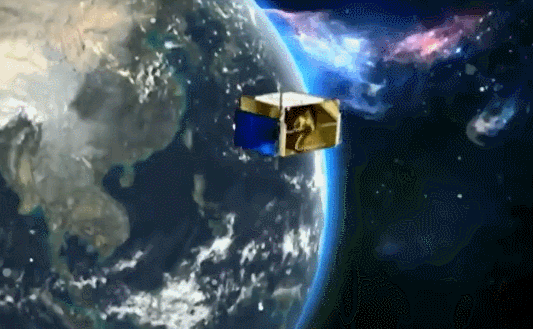
Wukong /CGTN Screenshot
Wukong /CGTN Screenshot
“Sun Wukong,” or the Monkey King, is a renowned hero in the Chinese classical novel “Journey to the West.” But in 2017, Wukong had a new destination: space – more specifically, about 500 kilometers above the earth.
China's first astronomy satellite set out to unveil the invisible (literally), and study cosmic rays to help with the understanding of the origins of dark matter, a non-luminous material that cannot be directly observed.
Wukong was able to measure high-energy cosmic ray electrons in space, leading Chinese scientists to believe that dark matter might not be as “dark” as it was initially thought, and that it can be observed, which means it could be detected and studied.

Micius /CGTN Screenshot
Micius /CGTN Screenshot
China took a step closer to building an unhackable communication network thanks to its first quantum science satellite, also the first of its kind in the world, “Micius,” or “Mozi.”
The satellite, which was launched in 2016, successfully completed its three scientific goals in 2017, mainly to send entangled light particles over longer distances than before; send quantum keys, which are able to encrypt or decrypt data, from space to ground; and teleport particles the other way.
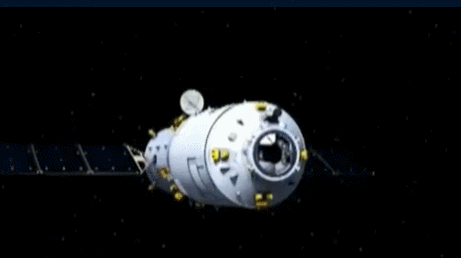
Tianzhou-1 /CGTN Screenshot
Tianzhou-1 /CGTN Screenshot
Dubbed the “space courier,” Tianzhou-1, China’s first cargo spacecraft, blasted off on April 20 aboard a Long March-7 Y2 carrier rocket.
It conducted fast-docking and refueling with Tiangong-2 space lab, making China the third country in the world to master such a technique, and laying a solid foundation for the country’s permanent space station construction by 2022.

C919 /CGTN Screenshot
C919 /CGTN Screenshot
After eight and a half years of development, China’s first domestically-built large passenger jet, the C919, successfully completed its maiden flight on May 5. The plane is capable of navigating at a maximum altitude of 12,131 meters, and marks China’s attempt at breaking into a market dominated by the West, especially when it comes to commercial jetliners.
The second model of C919 aircraft also completed its first trial flight on December 17.

Fuxing /Xinhua Photo
Fuxing /Xinhua Photo
Fuxing began operating on the high-speed railway between Beijing and Shanghai on September 21, travelling at a speed of 350 km/h.
Entirely designed and manufactured in China, Fuxing is the world's fastest commercially-used bullet train, with a top speed of 400 km/h. The train is more environmentally-friendly, boasts a longer lifespan and more comfortable interior than its predecessors, all of which contribute to its prominence.
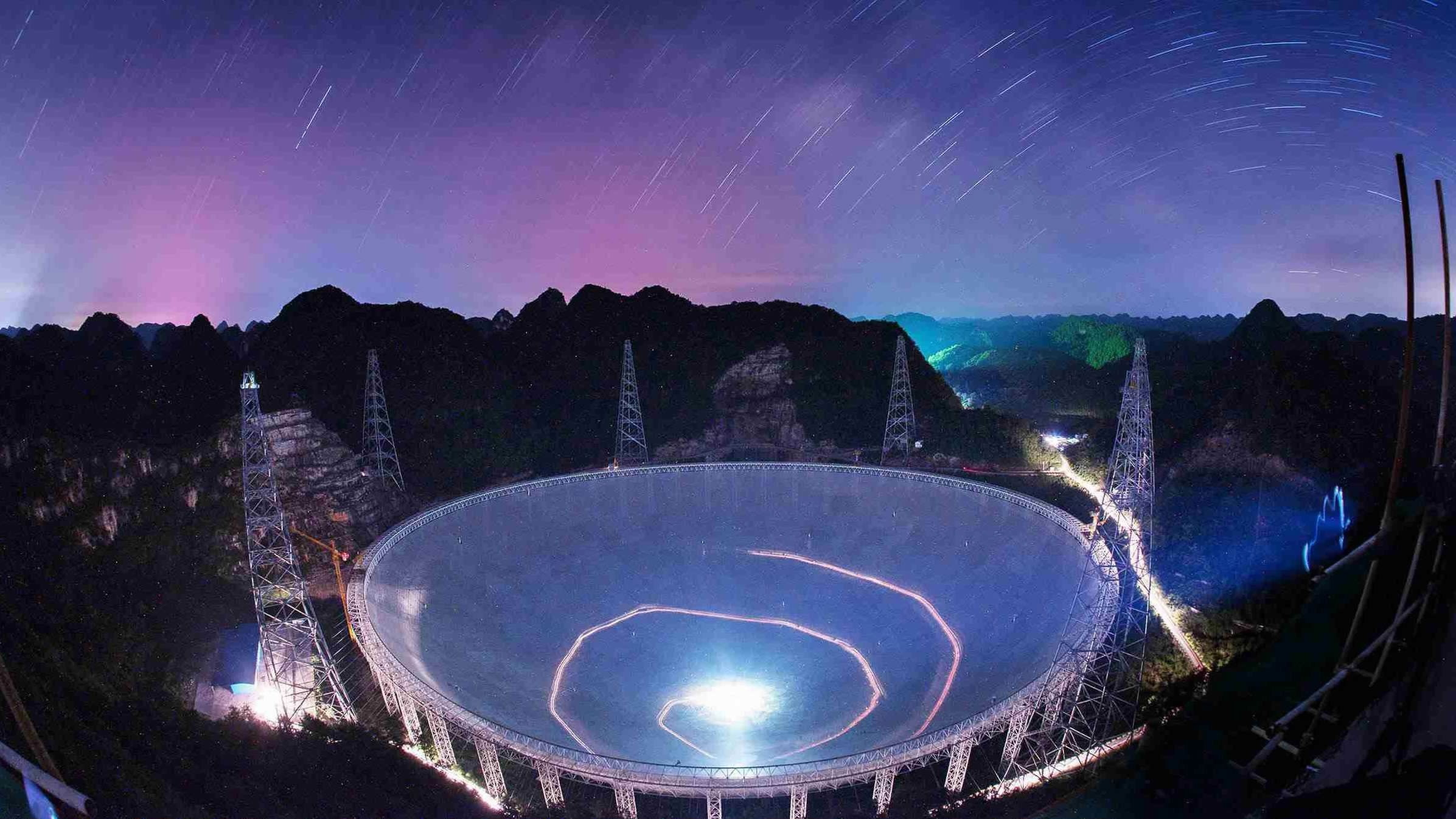
FAST /Xinhua Photo
FAST /Xinhua Photo
China's Five-hundred-meter Aperture Spherical radio Telescope (FAST) has identified nine pulsars since its trial operation last September, bringing a wealth of knowledge for the research on the origins of the universe and interplanetary navigation.
Based in southwest China’s Guizhou Province, FAST is the world’s largest single-dish radio telescope, capable of detecting intelligent extraterrestrial life in remote galaxies.

Seawater rice /Xinhua Photo
Seawater rice /Xinhua Photo
China's first seawater rice fields in Qingdao, east Shandong Province, were harvested in September with the highest yield of 9,314 kg per hectare. The agricultural breakthrough has the potential of boosting China’s rice production by nearly 20 percent and will be able to feed an additional 200 million people.
The species of rice is designed to grow in tidal flats and saline-alkaline land, and can survive after being immersed in seawater.

Type 001A /CGTN Screenshot
Type 001A /CGTN Screenshot
China’s first domestically built aircraft carrier, Type 001A, was launched in Dalian, a coastal city in the northeastern province of Liaoning on April 26.
Type 001A is China's second aircraft carrier, after the Liaoning. Putting the carrier into water marked a big step in China's efforts to design and build a domestic aircraft carrier and a big stride in China’s military transformation.
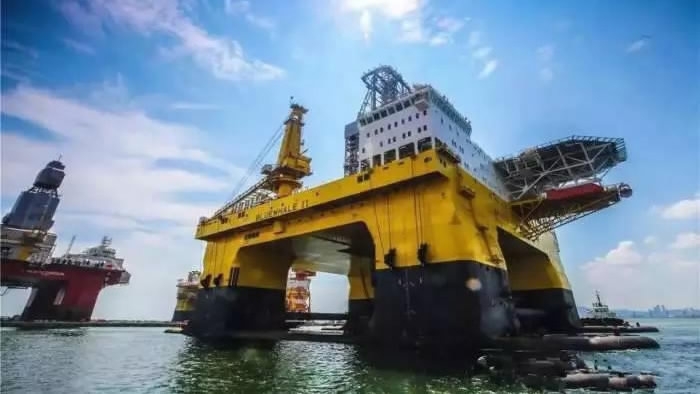
Blue Whale 2 /Xinhua Photo
Blue Whale 2 /Xinhua Photo
Blue Whale 2, China’s self-developed ultra-deep-water semi-submersible drilling rig, successfully completed its trial voyage in 2017.
Blue Whale 2 surpassed its predecessor, Blue Whale 1, which successfully extracted combustible ice from the South China Sea, in construction technology. It now ranks first worldwide in its operation depth and drilling depth, and is applicable to 95 percent of deep sea operations worldwide.
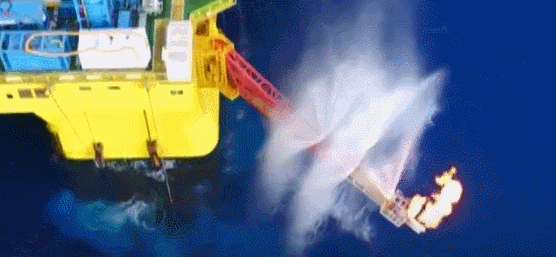
Combustible ice /CGTN Screenshot
Combustible ice /CGTN Screenshot
China declared its first success in collecting samples of combustible ice in the South China Sea on May 18. A 60-day mining trial there produced over 300,000 cubic meters of gas, and marked a breakthrough in the search for alternative clean energy sources.
One cubic meter of combustible ice is equal to 164 cubic meters of regular natural gas.
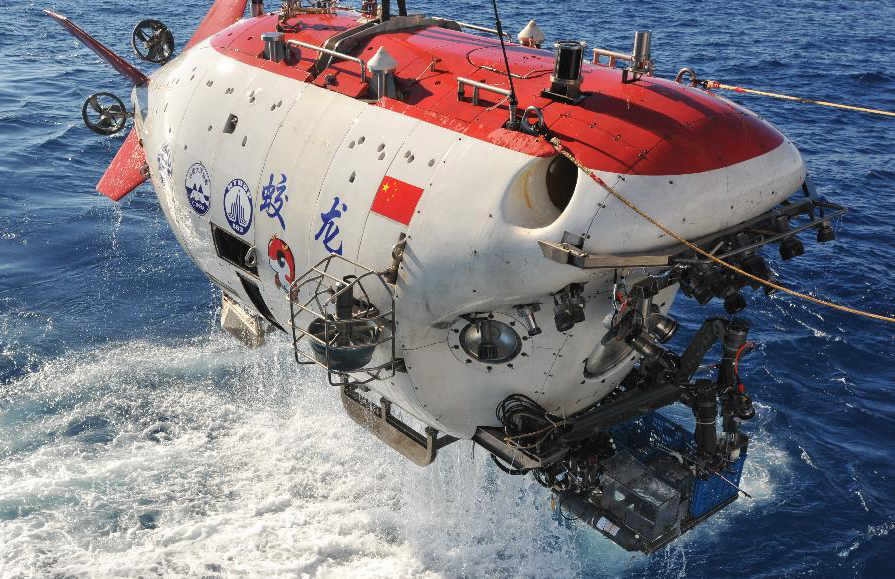
Jiaolong /Xinhua Photo
Jiaolong /Xinhua Photo
China’s deep-sea manned submersible, Jiaolong, was officially commissioned in 2017 and took part in the country’s 38th oceanic scientific expedition, conducting surveys, collecting samples and measuring environmental parameters.
Jiaolong reached its deepest point of 7,062 meters in the Mariana Trench in 2012.
(Infographic designed by Yu Peng)
Read more:

SITEMAP
Copyright © 2018 CGTN. Beijing ICP prepared NO.16065310-3
Copyright © 2018 CGTN. Beijing ICP prepared NO.16065310-3